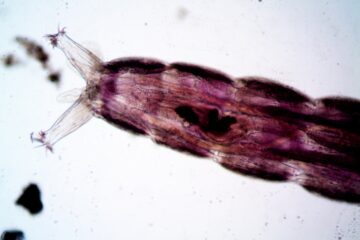![]()
Introduction
Forensic medicine is a broad word for a variety of medical professionals that evaluate and diagnose people who have been injured or murdered as a consequence of exogenous or artificial forms of violence, and then apply the findings to law (i.e. court cases). Forensic pathology, forensic psychiatry, forensic dentistry, forensic radiography, and forensic toxicology are all sub-specialties of forensic medicine. Clinical forensic medicine and pathological forensic medicine are the two primary categories of forensic medicine, with the distinction being the patient’s condition. Pathological forensic medicine studies traumas to the deceased to establish the cause of death, whereas clinical forensic medicine examines traumas to living persons.
In forensic toxicology, toxicology and allied sciences such as analytical chemistry, pharmacology, and clinical chemistry are utilised to aid in medical or legal investigations of death, poisoning, and drug use. The collecting and analysis of findings, rather than the legal result of the toxicological investigation or the technology utilised, is the primary emphasis of forensic toxicology. A range of samples are toxicologically analysed. A forensic toxicologist must evaluate the circumstances of an inquiry, namely any physical symptoms noted, as well as any evidence gathered at a crime scene that may aid in narrowing the inquiry. With this knowledge and samples to work with, the forensic toxicologist must assess which toxic compounds are present, at what amounts, and what impact those chemicals are likely to have on the individual.
History of Forensic Medicine
In the nineteenth century, Thomas Stuart used the term “clinical forensic medicine” to describe the bridge that linked the use of medical evidence for legal purposes. Although this form of forensic medicine traces its origins back to the coining of the word. Clinical forensics could not be considered genuine until both the legal and medical systems had matured fully. However, there is evidence of forensics stretching back to the Qin Dynasty in 220 B.C.E., where evidence of linking medical and legal systems was written down.
Pathological forensic medicine was not recognised as a distinct area until Joan Lobstein was appointed Professor of Pathology at the University of Strasbourg in 1819. However, forensic pathology has been utilised throughout history to ascertain the cause of death and all other aspects (e.g. method, etc.) by analysing the deceased’s body. Its original origins may be traced back to autopsy performed on animals as early as 400 B.C.E. Until the 13th century, the deceased’s corpse was regarded sacrosanct and could not be experimented on. However, about 1231 C.E., the first rule that permitted post-mortem and observation of a human body was passed. As more and more autopsies happened, the idea of human autopsies became increasingly relaxed. This progress resulted in several advances in pathology as the human body was correctly mapped for form and function, as well as research into illness causes. As archaic techniques were phased out and new scientific medical procedures were established, general health improved.
Origin of Forensic Medicine in India
“The medical profession is one of great antiquity in India. However, the history of medicine and, in particular the role of medicine in administration of justice in India has not been discussed very much.”[1]
Doctors were revered as knowledgeable men in ancient India, and one of the old Tamil hymns compares the doctor-patient relationship to a devotee’s ardent devotion to God. Kautilya’s Arthashastra includes a list of forensic evidence for identifying the cause of death and discusses the relevance of autopsies in determining the cause of death.
Early custodial death and its confirmation by medical practitioners, the issuance of medical certificates and wound certificates, and medicolegal autopsies are all documented in British India. India’s most important contribution to legal medicine was modern dactylography. There was a significant proportion of homicidal poisonings in India.
Techniques in Forensic Toxicology
Forensic toxicology is a contemporary scientific area that uses techniques such as laser diode thermal desorption-tandem mass spectrometry (LDTD-MS-MS), DNA typing, and capillary electrophoresis. These processes can identify pesticides, pharmaceuticals, natural products, industrial substances, metals, and contaminants. Toxicological research can be conducted on a range of samples gathered from people under investigation. Valuable specimens include blood, urine, nails, hair, brain tissue, etc. Forensic toxicology’s modern analytical techniques are extremely popular for dispute resolution. “Forensic toxicology incorporates a number of analytical techniques for detection of drugs from a variety of samples procured from the subjects.”[2]
Blood has been used as the primary sample for forensic toxicological investigations following a person’s death. Several studies used blood to identify a range of substances for forensic purposes. The idea of creating freeze-dried whole blood samples containing medications of interest for use as test controls was investigated.
Application of Forensic Toxicology
Each substance’s chemical makeup is researched, and they are also recognised from various sources such as urine or hair. Forensic toxicology is concerned with how drugs are absorbed, transported, or removed in the body, also known as substance metabolism. Forensic toxicology will investigate where the drug impacts the body and how this occurs while learning about substances and how they operate in the body. While there are various applications for forensic toxicological testing, most people are probably best aware with drug and alcohol testing. This sort of testing is popular in the transportation and workplace industries.
Other function is for accidental or purposeful drug overdoses. Toxicology testing is also used to detect drivers who have a blood alcohol level that is higher than the legal limit. Forensic toxicology is also used in the investigation of drug-related sexual violence. Today, numerous drugs are used to make the victim incapable of defending herself against the perpetrator, who then sexually abuses her. Through toxicological testing, a sufferer may discover what drug was supplied to them and be treated accordingly.
In post-mortem investigations, forensic toxicology is performed to assess if an overconsumption of the drug happened and, then if, whether this resulted in death. Forensic toxicology testing allows forensic scientists to identify substances and establish a pattern of use. Suicidal, homicidal, and accidental poisonings are common in India and other countries. The availability of various substances including pesticides, insecticides, medicines, and chemicals raises the prospect of misuse.
Laws regarding Forensic Medicine and Toxicology in India
The government has integrated rules involving the abuse of poison and the admissibility of medical examination findings into Indian legislation in response to growing concern about the booming prevalence of poisoning worldwide, as well as a lack of public knowledge about its importance. Poisons are frequently used for robbery and suicide in India. Datura, for example, is utilised by the criminals who poisoned wayfarers. Travelers were poisoned and robbed on a regular basis in India until today.
When the Indian Evidence Act of 1872 or the Code of Criminal Procedure of 1973 were enacted, the legislature could not have imagined the enormous rise of modern science and technology and its significant impact on forensic science as well as the judicial process. However, the expert’s reports on the results of forensic toxicology became admissible later since the Indian Evidence Act requires evidence of the thoughts of persons particularly skilled upon a point of foreign law, science, art, or as to the authenticity of handwriting or finger impressions, the opinions on that point. The value of expert testimony is determined by a number of factors, including the expert’s skill and the precision of the science. However, in a case concerning a rape victim’s medical examination, the Supreme Court stated that medical adjudication is not an exact science. If the science is ambiguous, expert summative assessment is just substantiated and insufficient on its own to gain a conclusion. As a result, such evidences must be weighed addition to the physical and circumstantial evidence in every case.
Conclusion
Poisoning is prevalent in India, and it is estimated that far more than 50,000 people die as a consequence of toxic exposure each year. Poisoning has a variety of sources, both domestic and industrial, both accidental and purposeful. The most common agents in India appear to be pesticides, sedative drugs, chemicals, alcohols, plant toxins and household poisons (mostly cleaning agents). As the prevalence of poison cases in India has increased, the role of forensic toxicology has become increasingly important in a range of situations.
“With the advent of 21st century, the scope of a forensic toxicology service has technically and intellectually become very demanding. Even though the short-comings of forensic toxicology persists in some spheres, still its role in delivering the justice and solving criminal cases has been highly appreciated and relied upon.”[3]
References
[1] Mathiharan, Karunakaran, “Origin and Development of Forensic Medicine in India”, The American Journal of Forensic Medicine and Pathology, September 2005, Vol. 26 Issue 3, pg. 254-260.
[2] Singh Z. “Forensic toxicology: biological sampling and use of different analytical techniques”, Forensic Res Criminol Int J. 2017;4(4):117-120. DOI: 10.15406/frcij.2017.04.00120 .
[3] Yadav M, Tiwari A. Forensic toxicology and its relevance with criminal justice delivery system in India. Forensic Res Criminol Int J. 2017;4(4):122-128. DOI: 10.15406/frcij.2017.04.00121 .



0 Comments